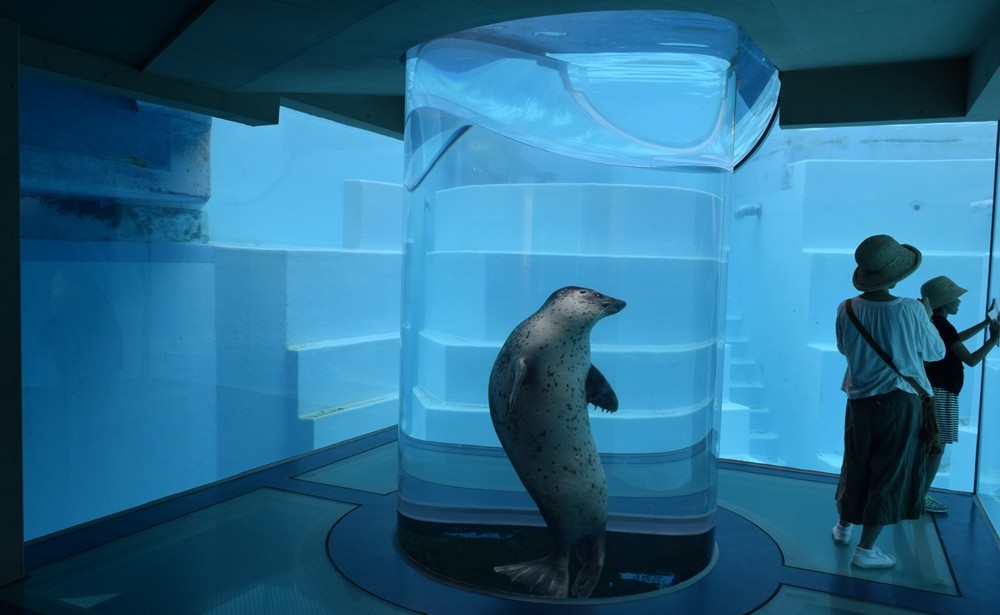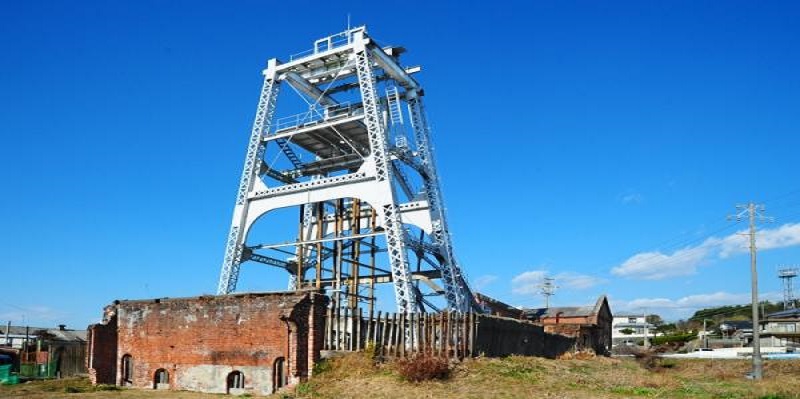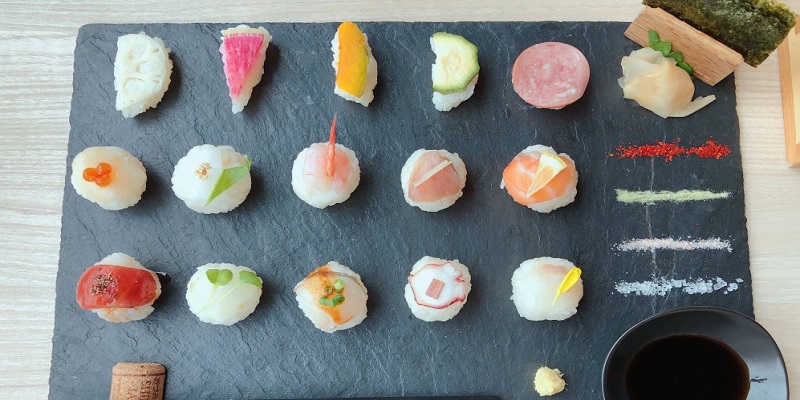In Fukuoka, there are many places to see, such as Hakata downtown, Nakasu famous for yatai, Dazaifu Tenmangu Shrine, Mojiko Retro and Kanmon Straits, Water capital Yanagawa.
Recently, Itoshima Island, full of Instagrammable spots, becomes also popular.
And, gourmets like Hakata ramen, Motsunabe (a hot pot with beef or pork motsu (offal)), Mentaiko (seasoned pollack roe), are all attractive.
Let me show you points of convenient to planning and the recommended information that you need to keep in your mind if you go for a travel to Fukuoka.
Contents
What is Fukuoka like?
 image by blog.gaijinpot.com
image by blog.gaijinpot.comFukuoka Prefecture is the center city of Kyushu in economy, culture, and government, and the Prefectural office is located in Fukuoka City.
It has the largest population among other prefectures in Kyushu region, and at the 9th largest population in Japan.
There is Genkainada on the north, the Seto Inland Sea is on the east, and Chikugo region faces Ariake Sea.
The distance to Busan, Korea, a neighbor country, is only about 200 km.
As it is close to the Korean Peninsula and the Asian Continent, it is treated as “a gateway to Asia”, so interaction with Asia is also thriving.
Representing Fukuoka, sightseeing spots, are Hakata/ Tenjin, a center of Fukuoka City where you can enjoy yatai gourmets and strolling around the town, and Shika no Shima Island where found the golden seal, and Fukuoka City where located Marine World Umi no Nakamichi.
In its south, there is Dazaifu City, where Dazaifu Tenmangu is located, and in which Lord Sugawara no Michizane is enshrined.
Also, there is Yanagawa City, a water capital, where is located the house that Hakushu Kitahara was born.
In between Fukuoka City and Kitakyushu City, there is the world heritage, Munakata-Taisha.
And in its west, there is Kitakyushu City, where are Kokura Castle and Mojiko Retro, from which you can overlook Kanmon Straits.
All the places are so attractive that you cannot miss any.
Fukuoka Airport and Kitakyushu Airport are the gateways of the sky of Fukuoka.
Stations of Shinkansen Bullet Train are Hakata station of Sanyo and Kyushu Sinkansens and Kokura station of Sanyo Shinkansen.
It is the origin station of Kyushu Shinkansen that connects with Kagoshima Chuo station.
And, private railways also are developed.
Nishitetsu operates 4 routes in total and 106.1 km of lines.
In addition to JR, if you use Nishitetsu, you can go around sightseeing spots effectively.
When Is the Best Season in Fukuoka?
 image by japantravelnow.com
image by japantravelnow.comFrom here, let me introduce information convenient to planning a travel.
First of all, when is the best season for sightseeing in Fukuoka?
Because Fukuoka Prefecture faces the Japan Sea, the north region where Fukuoka City and Kitakyushu City are located can be said as the climate on the Japan Sea side that makes most of days cloudy weather with the north west seasonal wind blowing in winter.
But, amount of precipitation is a lot in summer and less in winter as like the Pacific side climate, so it is the uncommon region which has two different climates.
The south is warm climate similar to that of the Seto Inland Sea climate.
But, the inland region often becomes extremely hot days with temperature over 35 degrees Celsius in summer, and on the other hand, there is even snow accumulated in winter.
It is characteristic of the region that the difference in temperatures is extreme.

Cold days continue even in early March in Fukuoka.
The average temperature is 10.5 degrees Celsius even around late March.
The temperature gradually goes up when in April, and Fukuoka Castle Sakura Festival will be held around late March through early April.
Becoming temperature around 20 degrees Celsius in the morning and at night, May is very comfortable and is the best season for a travel.
The best season of Kawachi Fuji (wisteria) Garden, which was CNN selected as “the one of the most beautiful Japan’s 31 places” and gathers attentions, is also from middle of April through middle of May.

Hakata Dontaku Festival is also held during the Golden Week (about one week consecutive Japanese national holidays around from late April through early May).
Although June is rainy season, it is not very hard to go for strolling around the town, because underground malls are developed in Fukuoka, and because there are many spots, such as Canal City Hakata, where you can comfortably spend your time even on a rainy day.
In Fukuoka, it is said that “when Yamakasa, a festival finishes, midsummer comes to Fukuoka”.
After middle of July, when Hakata Gion Yamakasa, which is held from July 1st through July 15th every year, finishes, rainy season will end.
As days covered by a Pacific high pressure system increase, it enters into midsummer.
The average daily highest temperature in July reaches even as high as 33.3 degrees Celsius, humid days continue until around early September.
Though it is hard season for strolling around the town, summer is also recommended if you plan to go to the events, as fireworks festivals and summer festivals will be held in each region, such as Nishinippon Ohori Fireworks Festival, the largest in Kyushu, and Kanmon Straits Fireworks Festival, the one of the best in the West Japan.



Though you may have an image that Kyushu is hot, the heat rapidly eases down when in September in the north region of the climate on the Japan Sea side.


When in October, the average temperature goes below 20 degrees Celsius, and the highest temperature is 23.1 degrees Celsius.
Same as around April and May, autumn in Fukuoka is comfortable climate also for walking around.
From October through November, especially when you can view autumn leaves, can be said as the best season for a travel.
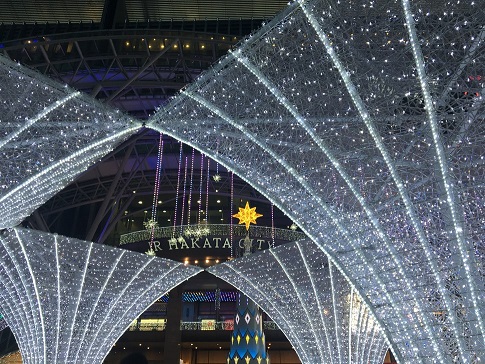

Although in early November still remains atmosphere of autumn as there are many days goes over 20 degrees Celsius during a day, when around middle, days with the lowest temperature of below 10 degrees Celsius increase, and it becomes rapidly climate of winter.
A thick jacket and an overcoat will then be needed.
On Itoshima Island of Fukuoka City, some about 30 oyster huts will open around this period.
In Hakata, it is a good season for Fukuoka gourmets, such as Motsunabe, Mizutaki (chicken hot pot).
If you like to fully enjoy gourmets of Fukuoka specialties, it may also be a good idea to visit in winter.
It is the coldest season from December through February.
As there also are accumulated snow, if you are careless, you may think that Fukuoka is warm because it is in south, and you will be really in trouble.
Be sure firmly to have cold protection!
What are Routes for Travel to Fukuoka?
Before you make a plan, if you like, please read this article to imagine sightseeing places to go in Fukuoka.
Routes to Fukuoka are dependent on the starting points, and if you use railways from Honshu(main land), let’s go to Hakata station by Bullet train.
If using airplanes, you can go either to Fukuoka Airport of Fukuoka City or to Kitakyushu Airport of Kitakyushu City.
Although there are definitely more routes and flights in Fukuoka Airport than those in Kitakyushu Airport, Kitakyushu Airport is more convenient if you go to Kokura Castle and Mojiko Retro.
Starflyer and Fuji Dream Airlines that connects with Nagoya Komaki Airport are operating flights.
Fukuoka Prefecture is a place packed various attractions, such as Fukuoka City of a big city, shrines and temples, nature, and the sea.
Because transportation system is developed, it is also good to easily move around by trains and buses.
If you go around sightseeing only inside of Fukuoka City, let’s go first of all to Ohori Park on the first day.
The park has been created utilizing an outer moat of Fukuoka Castle.
And then, let’s overlook the city from Fukuoka Tower located in Momochihama.
Enjoy sunset at Momochi Seaside Park, stroll around the largest entertainment street Tenjin, and indulge with Hakata gourmets at yatai of Nakasu and Tenjin at night.
On the second day, go to Marin World Umi no Nakamichi with an aquarium by a high-speed craft from Bay-side Place Hakata.
After enjoyed a superb view at Shika no Shima Island where found the gold seal, go returning to the city and go to observe the gold seal of the national treasure.
Lastly, enjoy Hakata gourmets around Hakata station, and take a way home.


In addition to sightseeing spots of Fukuoka City, let’s try going toward Dazaifu Tenmangu Shrine as well.
On the first day, take Omuta line from Nishitetsu Fukuoka station (Tenjin) for about 15 minutes by a limited express and go to Futsukaichi station.
Transfer to Nishitetsu Dazaifu line and for about 5 minutes.
From Dazaifu station, walk about 5 minutes, while enjoying stand-up gourmets, including Umegae mochi (a baked rice cake filled with sweet bean paste), and arrive there.
As right next to Dazaifu Tenmangu Shrine, there is Kyushu National Museum, it is recommended to go sightseeing there together.
From early evening through night, go shopping around Tenjin, and enjoy fully Fukuoka specialty gourmets.





On the second day, let’s go to Marine World Umi no Nakamichi, Shika no Shima Island, and full of Instagrammable spots, Itoshima Island.
Also, may be good to stop by at Noko no Shima Island, floating on Hakata Bay, which is popular recently as flowers blooming isolated island.
Go to Meinohama Dosenba, the Ferry Terminal bound for Noko no Shima, by bus from Tenjin.
You can see the landscape like of a different world by just 10 minutes cruise.
If you arrive early in Fukuoka, you can go sightseeing to Dazaifu Tenmangu Shrine during the morning of the first day, and then you can go also to a water capital Yanagawa in the afternoon.
If you like to enjoy slowly visiting also a hot spring, let’s stay for two nights.
The route that go to Yanagawa and Futsukaichi Onsen Hot spring on the second day, and go sightseeing inside of Fukuoka City on the third day is also recommended.
Take a limited express of Omuta line from Nishitetsu Fukuoka station (Tenjin) for about 45 minutes to Yanagawa.
Also, it takes about 40 minutes from Dazaifu station to Yanagawa.
Walk for three minutes from Nishitetsu Yanagawa station to a boarding point of a boat ride.
If you visit to Kitakyushu area, where located Mojiko Retro and Kokura Castle, the nearest airport and station are Kitakyushu Airport and Kokura station of Sanyo Shinkansen.
As it takes about 90 minutes from JR Hakata station by a JR rapid train, if there is a direct flight to Kitakyushu Airport from your original airport, it will save more of your time by visiting on a flight that arrives at Kitakyushu Airport than by a flight arrives at Fukuoka Airport.
Also, in between of Fukuoka City and Kitakyushu City, in the place where you take and transfer a rapid train and a bus from JR Hakata station for about 50 minutes, there is the world heritage Munakata Taisha.
Mojiko Retro is located right after getting off of JR Mojiko station.
There are lined up numerous retro buildings that remain deeply vestiges of that time in Mojiko port, where flourished as an international trading port, same as Yokohama and Kobe, since late Meiji period.
Indulge yourself with a specialty Yaki-curry (Baked curry) at lunch.
If time allows, it may be good to cross over to Shimonoseki area of the opposite shore by a boat.
Where arrived in about 5 minutes there are Karato Ichiba market, which is a popular seafood gourmets heaven, and Shimonoseki Aquarium Kaikyokan.
Nightscape overlooking Shimonoseki from Mekari Park of Mojiko is also recommended.



How Many Nights to Stay in Fukuoka
Fukuoka is roughly divided into areas like Fukuoka City and its suburbs, and Dazaifu, Yanagawa, Kitakyushu and around Mojiko.
Though numbers of nights of stay are dependent on the places to visit as well as routes, let me introduce some examples here.
If you visit only to the center of Fukuoka City, and Umi no Nakamichi, one night stay is OK.
If you stay at hotels around Hakata station, or Tenjin station where located Nishitetsu’s station, it is convenient to move around.
You can go sightseeing efficiently.
It takes about 90 minutes by train from Fukuoka to Kitakyushu, where located Mojiko port and Kokura Castle.
It will also be OK one for night stay, but if you like sightseeing of two cities relaxed and slowly, it may be better to stay for two nights, because transportation will require a bit of times and there are many must-see places like Mojiko Retro around Kanmon Straits.



If you go sightseeing main spots of inside of Fukuoka City and Dazaifu Tenmangu Shrine and Yanagawa, minimum one night stay may be OK, but if you arrive at Fukuoka around noon, it may be difficult to go around all the area by one night stay.
If you like to spare enough time for sightseeing, the minimum two nights stay is required.
One night stay is enough if you just go sightseeing only to Dazaifu Tenmangu Shrine and Yanagawa.
Because both places are along Nishitetsu, you can go around efficiently.
If you still have time, let’s go a bit afar to the terminal Omuta station of Nishitetsu, and it may be also good to see around the Heritage of Industrial Modernization, including the world heritage Miike Coal Mines Miyanohara, and Miike Port.
If you go sightseeing only Kokura Castle, Mojiko Retro and around Kanmon Straits, one night stay is enough.
But, as it takes about 90 minutes from Hakata station by train, if there is a direct flight to Kitakyushu Airport from your original airport, it will save more of your time by visiting on a flight that arrives at Kitakyushu Airport than by a flight arrives at Fukuoka Airport.
And, if you use Sanyo Shinkansen, let’s get off at Kokura station.
Where to Stay in Fukuoka?
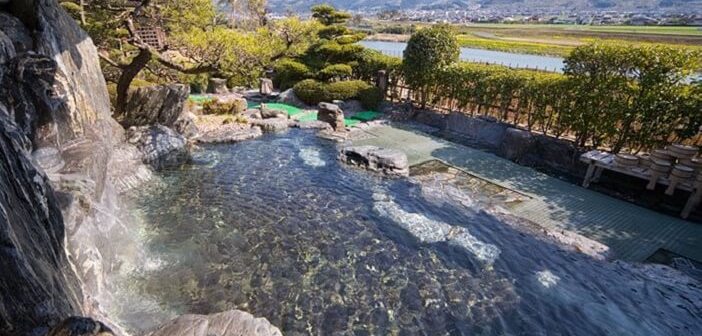

Fukuoka City is one of the largest cities in Japan.
There are various accommodation facilities, including luxury city hotels of international class and reasonable prices hotels.
And, in Fukuoka, there are also popular hot spring places, such as Harazuru Onsen, Futsukaichi Onsen, and Chikugogawa Onsen.
If you stay in Fukuoka City, convenient is around Hakata station to Tenjin, where is close to entertainment street and gathered stations of each railway.
“Hotel New Otani Hakata” is located where is convenient to going to anywhere, like one minute walk to a subway station and several minutes walk to Tenjin yatai street.
Breakfast is buffet style of Japanese, Western, and Chinese dishes of 100 kinds, and there also are lined Hakata specialties menus in a row.
You can also select consciously the Japanese dish of Kyushu products.
Nostalgic atmosphere breathes in Mojiko Retro.
If you stay here, you want to consciously select a hotel, don’t you?
“Premier Hotel Mojiko” is designed by Aldo Rossi, an Italian architect, and its beauty of form is blending with and is blending the retro landscape that is created by the historical buildings around.
The illumination at night is beautiful, and you can overlook Kanmon Straits from rooms and restaurants.
And, it is also famous for high level of breakfast buffet.
There are menus like Mojiko specialty Baked Curry and Shimonoseki blow fish, and you can enjoy Fukuoka gourmets luxury from the morning.
“Harazuru Onsen” located in Asakura City of the south of Fukuoka Prefecture is one of the largest hot spring villages in Fukuoka Prefecture.
The characteristic of hot spring is alkaline and including sulfur.
And it is reputed as “hot spring for W (double) beauty skin”, that is also effective to whitening.
There are 34 origins of hot springs for 14 hot spring facilities in total.
As the village is proud of the amount of hot water that of 3000 liters per minute spring out, and such amount is the largest in Fukuoka Prefecture.
And such abundant amount of hot water is also attractive.
As the characteristic of hot springs are different in each inns, you can also enjoy the best part of visiting multiple hot springs.
The hot spring village faces Chikugo River, the largest Class A river in Kyushu.
In May every year, sweetfish fishing opens, and there is held fishing with cormorants through October.
Also, in the area around is famous for fruit picking, and there crowded for Kyoho grapes picking from summer to autumn, and for persimmon picking from autumn to winter.
“Harazuru Onsen” is also convenient to access from Fukuoka Airport by car for about 50 minutes.
Multiple World Heritages In Fukuoka
“Sites of Japan’s Meiji Industrial Revolution” is registered in 2015 and “Sacred Island of Okinoshima and Associated Sites in the Munakata Region” is registered in 2017 as the world heritages.
As both are located in Fukuoka, and as sites located in the prefecture are registered to UNESCO World Heritage one after another in recent years, Fukuoka gathers attentions.
Why don’t you find again the attraction of Fukuoka not just by going around the classic sightseeing spots, but also by visiting around the World Heritages?
Tagawa City of Chikuho area of Fukuoka Prefecture was once very flourished with coal mines.
“Tagawa City Coal Mining Historical Museum” is a museum built on a part of the ground, where ruins of Mitsui Tagawa Mine Ita pit, the largest class of Chikuho, have been redeveloped as Coal Commemorative Park.
There are exhibited many coal mining related documents and “Sakubei Yamamoto Collection” that is registered as UNESCO Memory of the World.
There remain the two smoke stacks and the Ita pit, which is registered as national tangible cultural asset, as these were at that time.
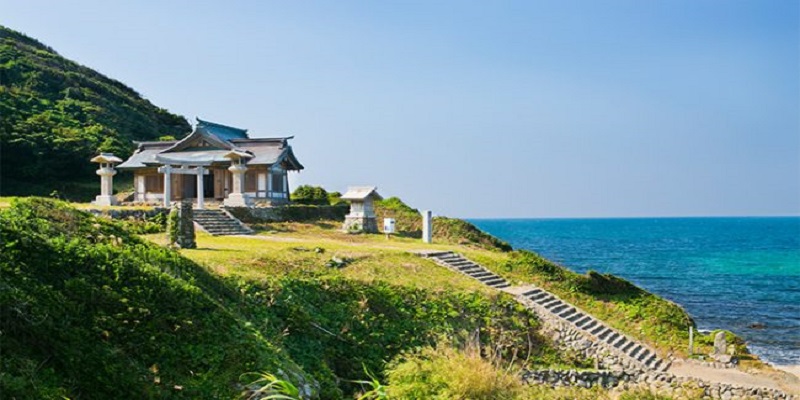

“Sacred Island of Okinoshima and Associated Sites in the Munakata Region” is located in Munakata City and Fukutsu City of Fukuoka Prefecture, where overlooking Genkainada.
Among them, “Munakata Taisha” is located about 12 minutes away by bus from JR Togo station.
And JR Togo station is where takes about 30 minutes by a rapid train from JR Hakata station and about 40 minutes by a rapid train from JR Kokura station.
It is just a convenient place stopping by when going to Kitakyushu City from Fukuoka City.
Around there is Miyajidake Jinja Shrine that is famous for “Path of Light”.
Munakata Taisha Hetsumiya Shrine is the base-point of faith in the Three Female Deities of Munakata, and the original place for faith was remains of Shimotakamiya ritual site located around the open-air ritual site.
The main building was reconstructed by Ujisada Munakata, the last high priest, and the prayers’ building was reconstructed by Takakage Kobayakawa around the end of the 16th century, and it now is a national importance cultural treasure.
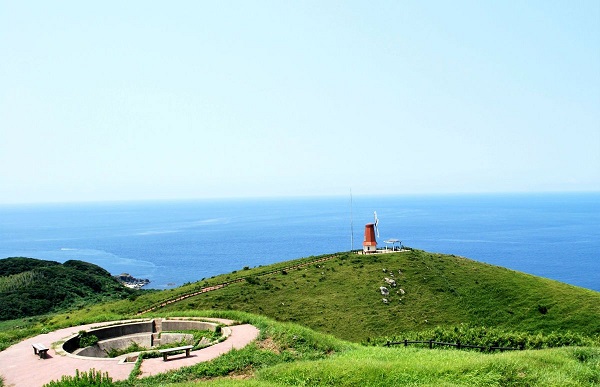

After strolling around Munakata Taisha Hetsunomiya Shrine, let’s go to “Oshima”.
On a scenic small isolated island, there are Munakata Taisha Nakatsu-miya and Okitsu-miya, which is said as the origin of legend of Tanabata (Star festival), and the remains of gun battery.
As okinoshima Island is closed to women, ordinary people cannot go, but there are shuttle ferry operated everyday to “Oshima”.
You can go there easily in about 25 minutes.
There is a walking route, named as Oshima Pathway going to Oshima lighthouse from the remains of gun battery.
You can enjoy the great landscape from an observatory on the top of Mitakesan mountain, the highest mountain of Oshima, where you can overlook Okinoshima, Fukuoka Dome stadium, and Hikosan mountain.
Activities that you like to enjoy in Fukuoka
In Fukuoka, there are many exciting activities.
You can learn more about Fukuoka well if you try various experiences, not just go sightseeing by walk.
And there are also outdoor activities that you can fully enjoy nature on Itoshima Island where gathers attentions recently for Instagrammable spots!
The second largest volume of strawberry production is Fukuoka in Japan.
“Hakata Amaou”, the brand of strawberry, is popular, and there are also many fruit farms.
At most of the fruit farms, besides Amaou, other kinds are planted, such as Akihime, Benihoppe, Yayoihime, and Tochiotome, and you can eat and compare each of many kinds of strawberries.
Why don’t you eat up strawberries until you satisfied at strawberry picking of Fukuoka?


Tradition breathes in Hakata, Fukuoka, despite being the city.
There are festivals like Gion Yamakasa and Dontaku, and are many traditional craft-works, such as Hakata doll and Hakata ori (Hakata weave).
You can enjoy various menus for experiences, while learning history and culture of Hakata, at “Hakata Machiya Furusato Kan”.
Must-sees are performances of painting colors on Hakata hariko, Hakata koma, Hakata magemono, Hakata doll, by traditional craftsmen.
You can experience also by yourself for painting colors on Hakata dolls and weaving by hands Hakata ori cloth.
And, if you join to a guided tour, leaving from in front of “Hakata Machiya Furusato Kan” or ride on a rickshaw, you can go around, while hearing explanations, sightseeing spots of shrines and temples, including Kushida Jinja Shrine, which is Sochinju (local Shinto deity) of Hakata, and Tochoji Temple, proud of a large wooden seated statue.
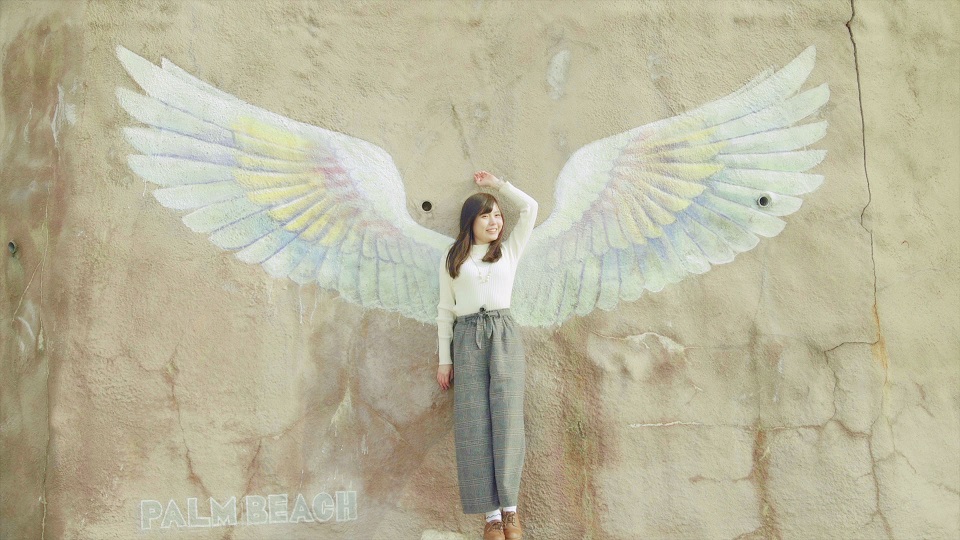

The sightseeing spot that increasingly gathers attentions in Kyushu is Itoshima of Fukuoka Prefecture.
Angel Wings drawn near a beach is popular as Instagrammable.
Besides, there are many sightseeing spots of photogenic, such as Meotoiwa Rocks of Sakurai Futamigaura.
And, Itoshima is rich in nature surrounded by mountains and seas, and there are many spots where you can be refreshed from your heart, such as beautiful beaches facing Genkainada, and Shiraito no Taki waterfalls of the scenic spot.
About 8 minutes from the Shiraito no Taki waterfalls, there is Forest Adventure, the first in Kyushu.
Going through the forest, the Zip-line of 110 m at the longest, is very popular, that you can feel exhilarating as if flying in the sky.



Food You Like to Eat in Fukuoka
Fukuoka is a gourmet heaven.
There are as many specialties as countless, such as Tonkotsu ramen, Yaki ramen, Motsunabe, Mentaiko.
Although you may not be able to decide what to eat, 3 must-eat Fukuoka gourmets are here.
First of all, you cannot miss absolutely “Tonkotsu ramen”.
Fukuoka is hometown of a ramen using tonkotsu, such as Hakata ramen, Nagahama ramen and Kurume ramen.
Although there are ramen shops everywhere around the town, convenient is Hakata Men Kaido (noodle street) located in JR Hakata city, where you can eat after arrival and before departure from Hakata by Shinkansen.
As there are lined up popular ramen shops, you may be difficult to decide where to eat at.


It is a hot pot dish mainly made with offal like small and large intestines of beef or pork.
Put some taste with soy sauce or miso into broth made of bonito and kelp, and put pretreated motsu, amounts of Chinese chives and cabbage, and garlic for taking away bad smell, and then eat.
This is the general style to eat.
Not using a clay pot but using a stainless pot with two handles is a characteristic of “Motsunabe” in Fukuoka.
When you talk about a hot pot, it may not be very easy to go for eating alone.
But, there is actually a tidy restaurant that serves a hot pot for one person on Hakata Horoyoi Street located inside of DEITOS of Hakata station.
Even a woman can fully enjoy “Motsunabe” at ease.
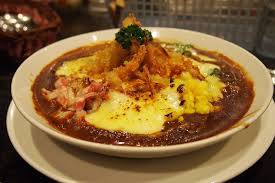

There remains many buildings constructed from Meiji through Taisho in Mojiko Retro of Kitakyushu.
A Popular gourmet of this elegance town is said “Yaki Curry”(baked curry).
There are so many shops that a Yaki Curry map is prepared, and it is served also in a restaurant of a former Moji Mitsui-Club of a national important cultural treasure.
A shop that was located at Moji port during Showa the 30s (during a decade starting from 1955) had begun Yaki Curry for the first time.
Orthodox recipe of “Yaki Curry” of Moji port is topping curry sauce on rice, topping cheese and eggs, and then baking in an oven, and there are a bit differences according to the shops.
Kokura of Kitakyushu City is also known as the original place of “Yaki Udon”.
It may be an interesting travel that going around Moji and Kokura and eating the original gourmets.
Souvenirs You Like to Buy in Fukuoka
Don’t forget checking also about souvenirs when you plan a travel to Fukuoka.
If you know the recommended souvenirs in advance, you don’t have to be panicking to choose souvenirs at station or airport on the way home.
When you talk about souvenirs of Fukuoka, there are many things like Japanese confectionery, represented by Hakata Toorimon, confectionery with strawberry as it motif, Karashi Mentaiko of specialty of Fukuoka, and Yame Japanese tea.


Among them the most famous is “Meika Hiyoko”.
* Hiyoko is a chick in Japanese
It is also sold in Tokyo, but it is a confectionery definitely born in Fukuoka.
When you came to Fukuoka, let’s try getting Fukuoka limited products that are not sold in Tokyo.
“Two Hiyoko”, sold limited at JR Hakata station Ming, are triple and double sized of the standard size.
And, “Hiyoko family”, include hiyoko of four different sizes, and seasonal limited products are also sold.


As a classic Hakata souvenirs, a confectionery “Hakata no Hito” has been loved since Showa the 40s (during a decade starting from 1965).
The package with an elegant Hakata doll wearing Kimono remains the same until now.
A new type of such “Hakata no Hito” is “Hakata no Hito Amaou strawberry milk taste” that looks matching to cute ladies.
It is a bite size confectionery, which is a milk-kan (a sweet milk jelly) of white bean paste wrapped with Baumkuchen of Amaou strawberry taste.
It is used abundant condensed milk in a milk-kan, and when you bite it, moist and sweet sour taste spread in your mouth.
There are lined up many other strawberry tasted souvenirs in souvenirs shops of Fukuoka.
There is “Strawberry Hiyoko” in December through January, and there is a product called “Hiyoko no Tamago” that is limited only in Hakata station and Kokura station.
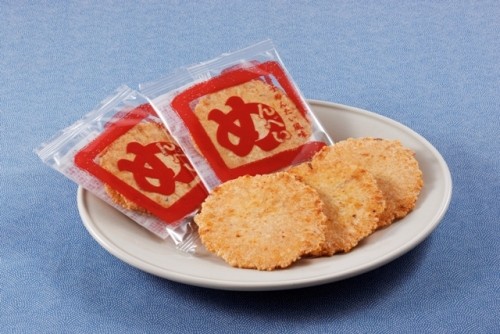

Confectioneries used Mentaiko are also popular.
“Menbei”, a seafood rice cracker that contains Mentaiko of Fukutaro, a famous Mentaiko shop, with squid and octopus, is a popular product with a stand-out package that written a large size letter of “ME (め, Japanese hiragana character)”.
If you like to get real Mentaiko as souvenirs, how about a cube size, “Hakata Karashi Mentaiko Umaka Tamatebako Series” of Hakata Umaka?
It is Mentaiko as a base mixed with plum, kelp, squid, and yuzu (a Japanese citrus), and there are about 20 kinds.
A handy size like a box of Tamatebako (Pandora’s box of Japanese old folklore) is popular also for women.
The best seller is plum.
Sour taste of plum and a taste of Mentaiko match so well that you cannot stop eating.
Let’s Go Trip to Fukuoka
In Fukuoka, there gather various and full of attraction sightseeing spots that everybody can enjoy, such as historical sightseeing spots, where remains old townscape, and World Heritages and Instagrammable spots that are popular recently.
There are also many delicious specialty dishes.
Please plan your trip referring by all means this articles, also for enjoying fully such Fukuoka.
Also, if you want to experience something extraordinary, please read below.



Note that this article shows the information in August 2019.



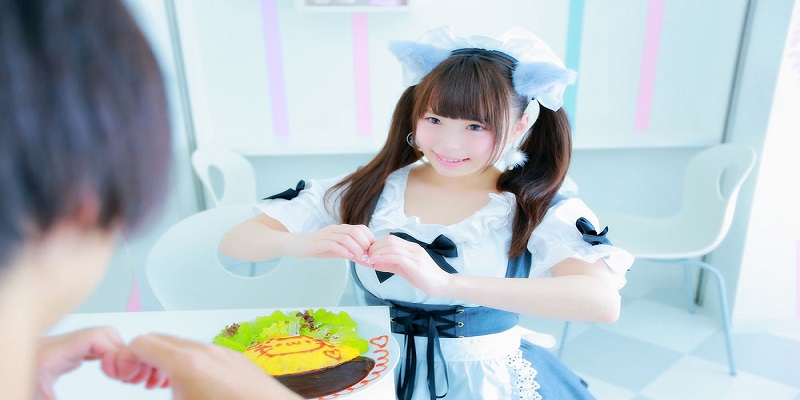






![11 Maid Cafe Ranking in Tokyo [Recommended even to beginners and ladies!]](https://jatrabridge.com/wp-content/uploads/slider/cache/11597c33ae53b47eb36a2f67968e635f/Maid-Cafe-Ranking-in-Tokyo2.3.jpg)







